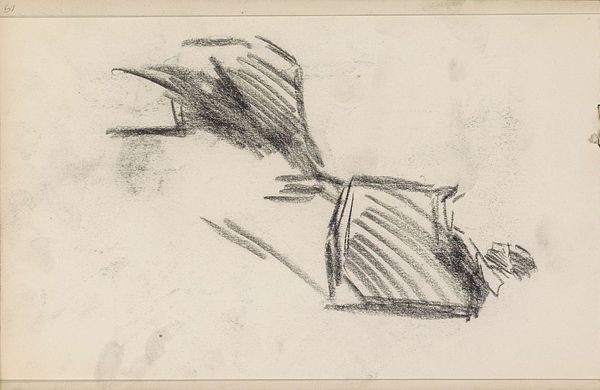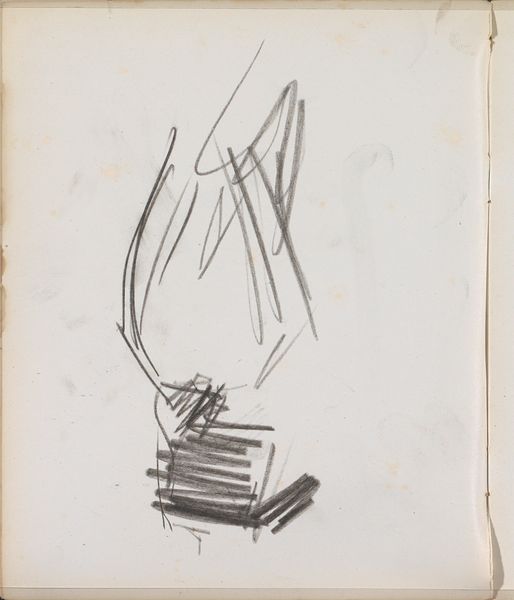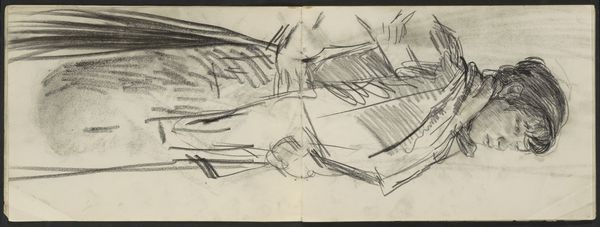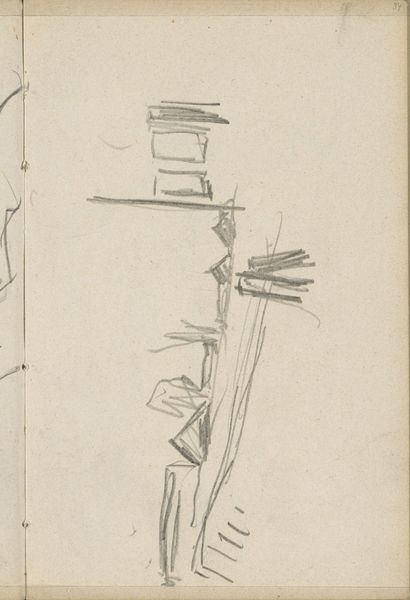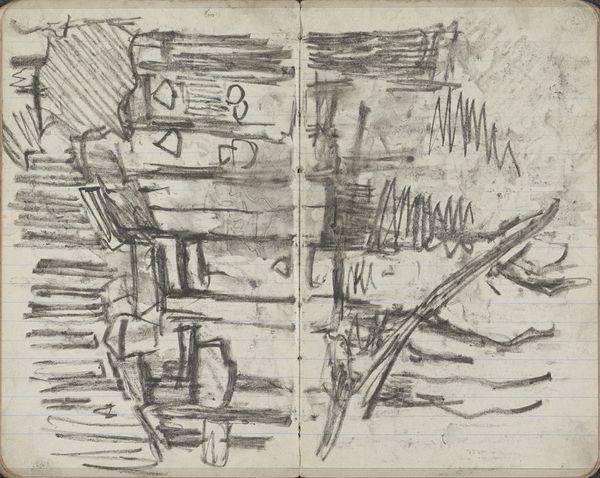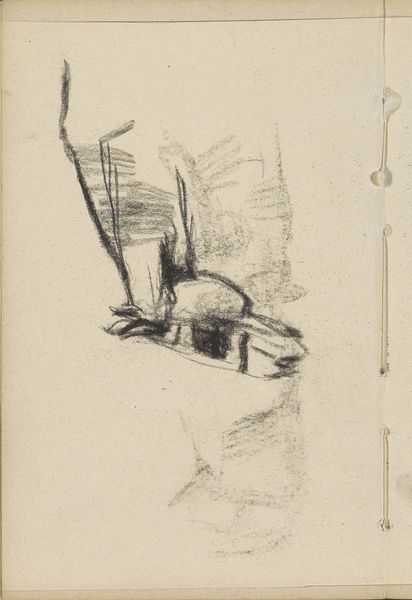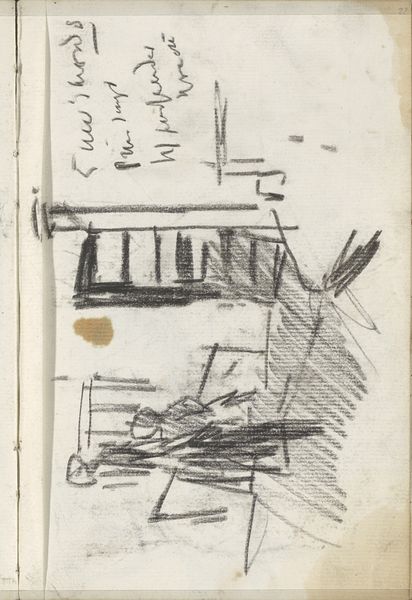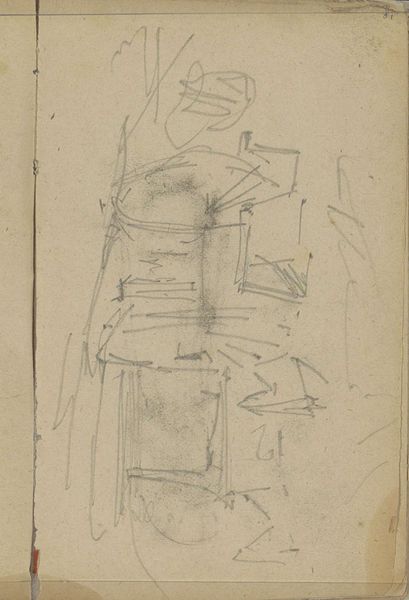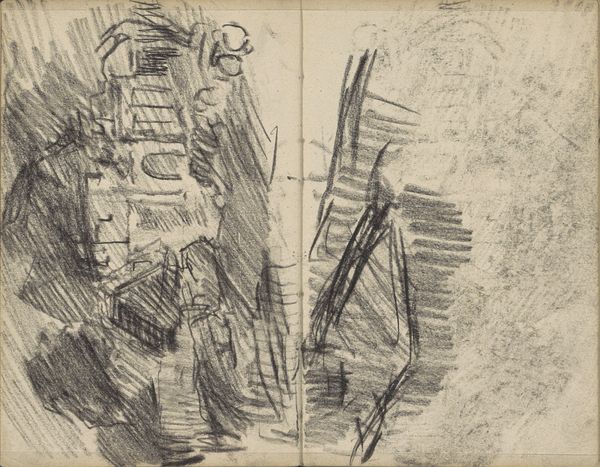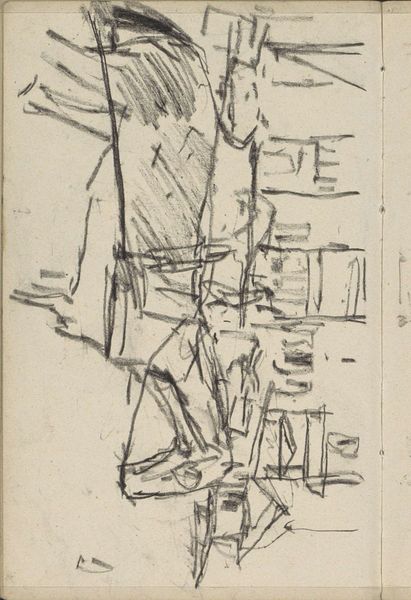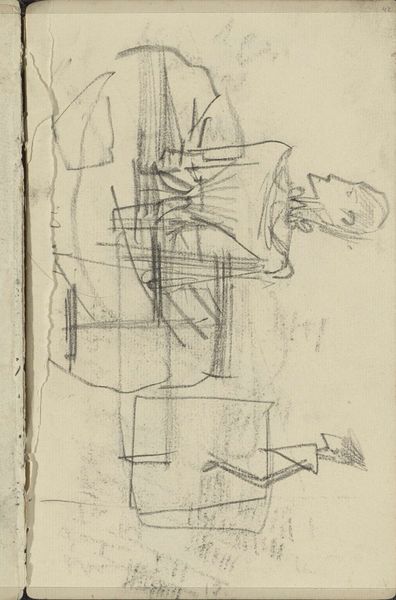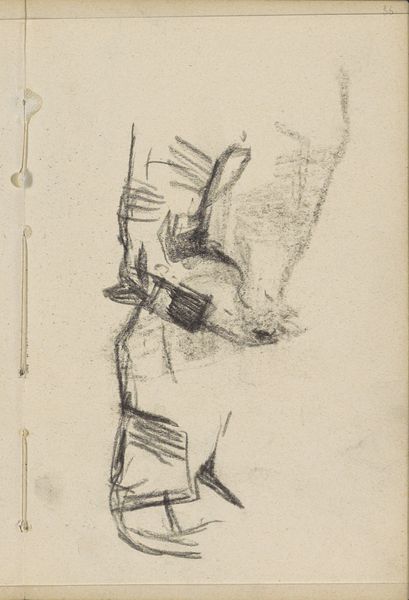
drawing, charcoal
#
drawing
#
dutch-golden-age
#
impressionism
#
pen sketch
#
landscape
#
charcoal
#
modernism
Copyright: Rijks Museum: Open Domain
Editor: This drawing, "Sleepboot met twee schuiten," by Willem Witsen, dates back to the late 1880s or early 1890s. It looks like charcoal and pen on paper. It has such a stark, immediate feel – almost like a snapshot of working-class life. What do you see in this piece that maybe I'm missing? Curator: Beyond the surface depiction of a tugboat, consider the context: late 19th-century Netherlands, a period of rapid industrialization and urbanization. Witsen, connected to the literary movement of the time, frequently portrayed the laboring classes and urban scenes. He wasn't just sketching boats; he was capturing a transformation in Dutch society. Editor: So, it’s about more than just the image itself? Curator: Absolutely. Think about what these boats represent: commerce, labor, the movement of goods, perhaps even colonialism and trade imbalances. The starkness you mentioned isn't just aesthetic; it's a reflection of the sometimes-grim realities of these workers’ lives, who were impacted by labor exploitation and urbanization. Can you see echoes of this through the charcoal lines? Editor: I can see how you draw those connections, now that you mention the societal factors at play. It makes me think about who has access to the waterways, and what kind of power that brings. Curator: Exactly. And who doesn't. Think about gender too. The world of shipping and transport during this time was predominantly male, which is reflected, though indirectly, in the artist’s portrayal. It speaks to the power dynamics in Dutch society. Editor: That’s such a great point. Thanks, I have a whole new perspective now! Curator: My pleasure. Art allows us to see beyond the canvas and contemplate social dynamics.
Comments
No comments
Be the first to comment and join the conversation on the ultimate creative platform.
